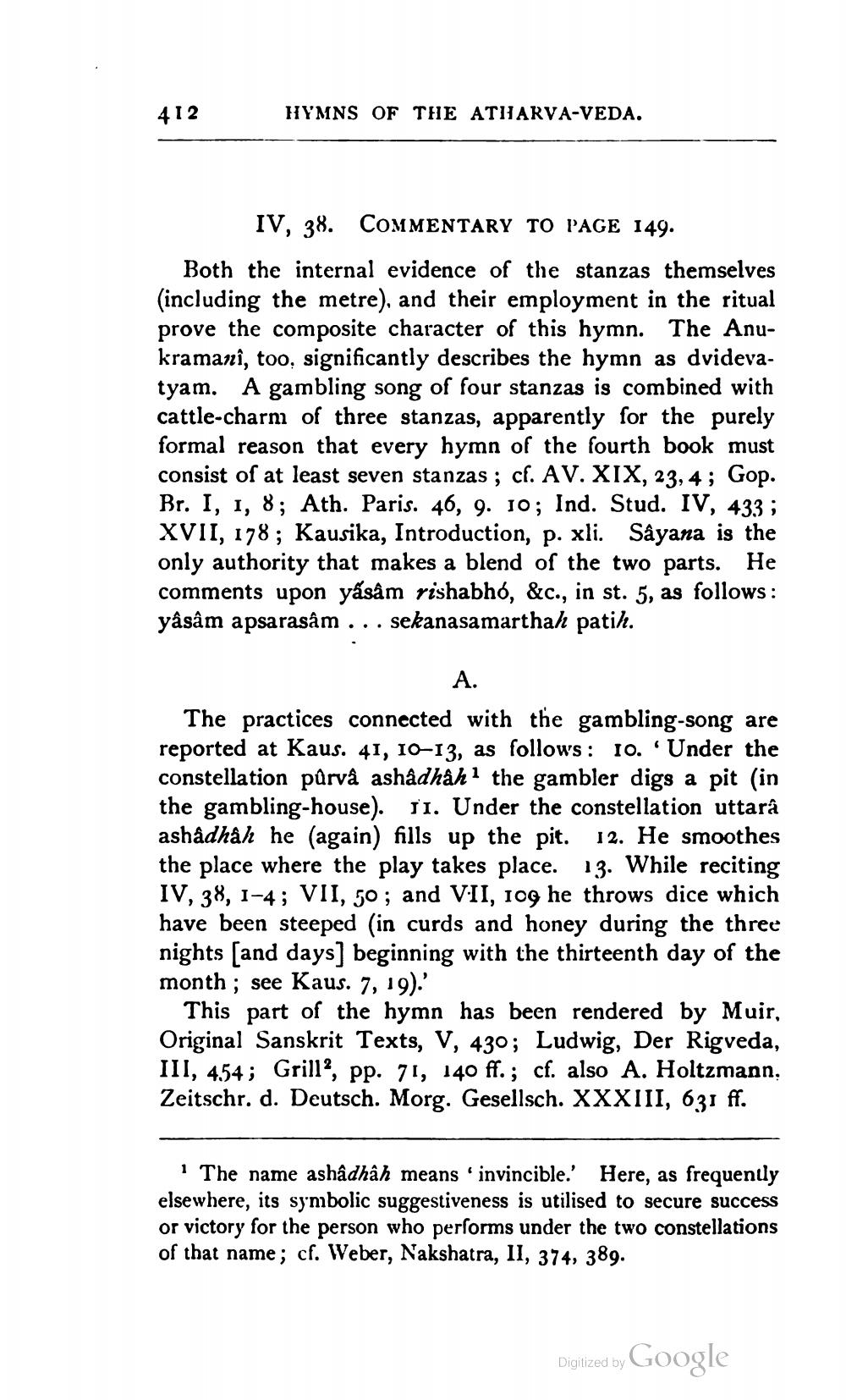________________
412
HYMNS OF THE ATHARVA-VEDA.
IV, 38. COMMENTARY TO PAGE 149. Both the internal evidence of the stanzas themselves (including the metre), and their employment in the ritual prove the composite character of this hymn. The Anukramani, too, significantly describes the hymn as dvidevatyam. A gambling song of four stanzas is combined with cattle-charm of three stanzas, apparently for the purely formal reason that every hymn of the fourth book must consist of at least seven stanzas ; cf. AV. XIX, 23, 4; Gop. Br. I, 1, 8; Ath. Paris. 46, 9. 10; Ind. Stud. IV, 433 ; XVII, 178; Kausika, Introduction, p. xli. Sâyana is the only authority that makes a blend of the two parts. He comments upon yásâm rishabhó, &c., in st. 5, as follows: yâsâm apsarasâm ... sekanasamarthah patih.
A.
The practices connected with the gambling-song are reported at Kaus. 41, 10-13, as follows: 10. Under the constellation pūrva ashadhah the gambler digs a pit (in the gambling-house). Ji. Under the constellation uttara ashâdhåh he (again) fills up the pit. 12. He smoothes the place where the play takes place. 13. While reciting IV, 38, 1-4; VII, 50; and VII, 109 he throws dice which have been steeped (in curds and honey during the three nights (and days] beginning with the thirteenth day of the month; see Kaus. 7, 19).'
This part of the hymn has been rendered by Muir, Original Sanskrit Texts, V, 430; Ludwig, Der Rigveda, III, 454; Grill', pp. 71, 140 ff.; cf. also A. Holtzmann, Zeitschr. d. Deutsch. Morg. Gesellsch. XXXIII, 631 ff.
The name ashâdhâh means 'invincible.' Here, as frequenuy elsewhere, its symbolic suggestiveness is utilised to secure success or victory for the person who performs under the two constellations of that name; cf. Weber, Nakshatra, II, 374, 389.
Digitized by
Digjized by Google




